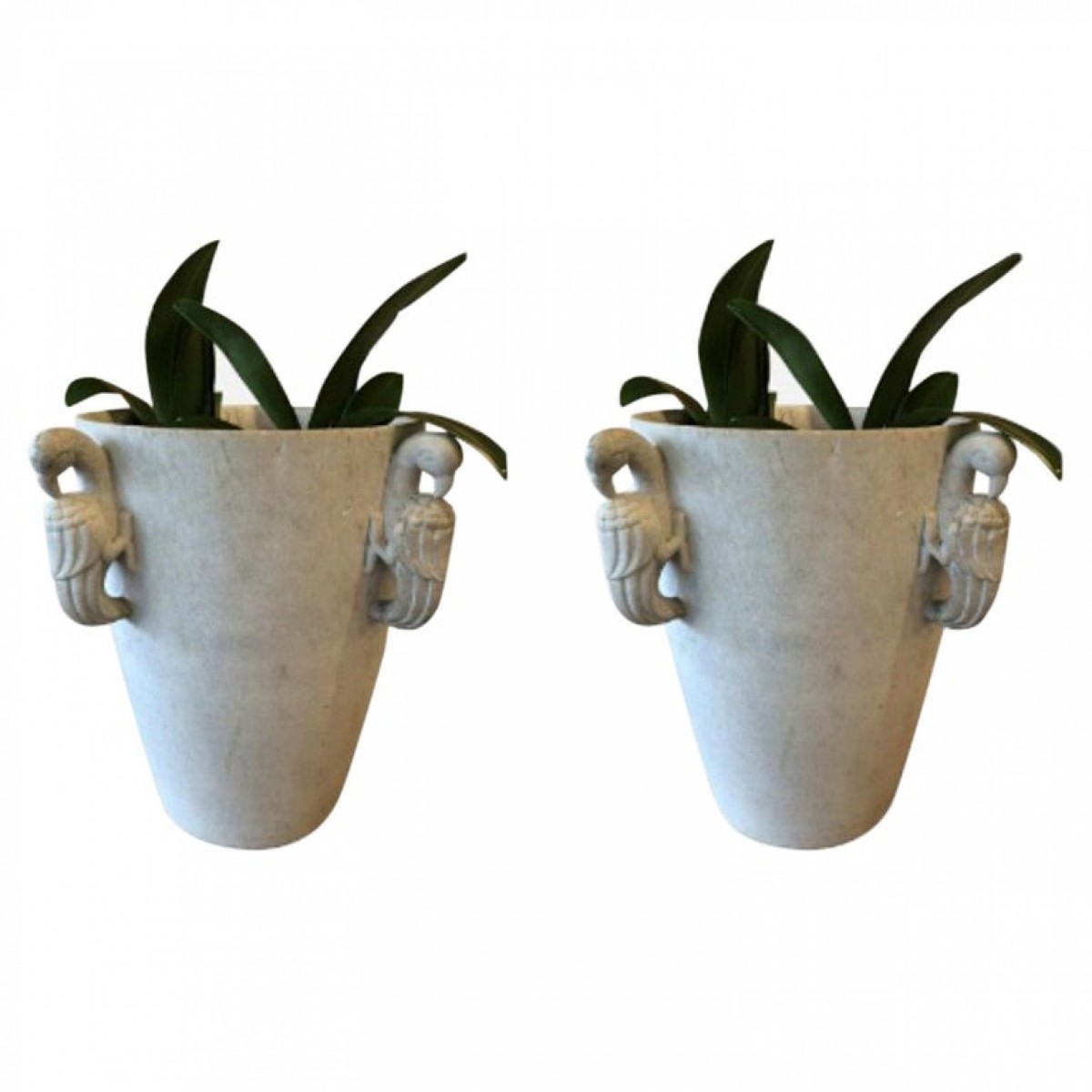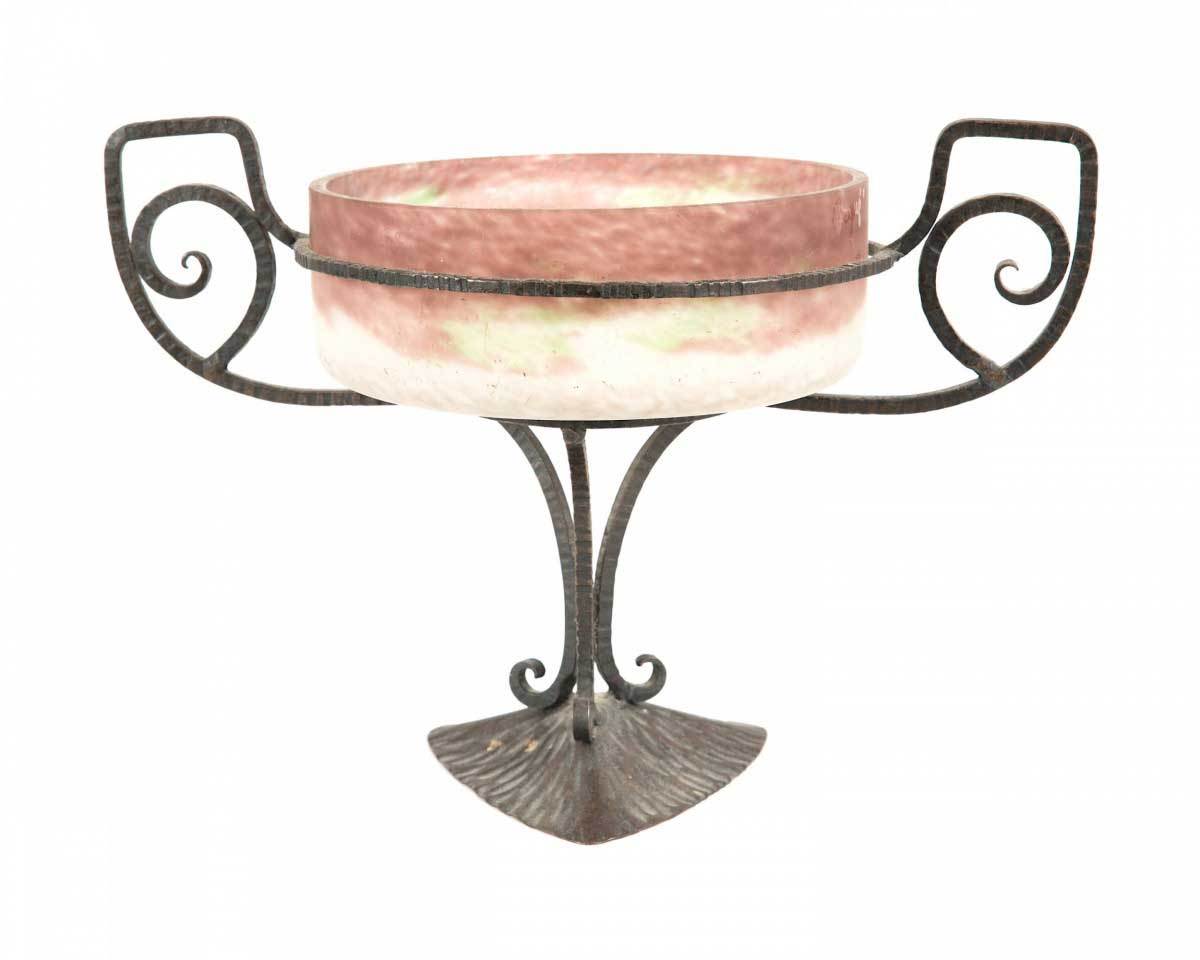X
{{ modalTitle }}
PLEASE FILL IN THE REQUIRED FIELDS.X
X
{{ modalTitle }}
Choose one of the options below.X
ITEM SUCCESSFULLY
ADDED TO PROJECT
Pair of French Art Deco Frosted Glass Domremy Lalique Vases
 Art Deco
Art Deco French
French Accessories/Décor/Bric-a-Brac
Accessories/Décor/Bric-a-Brac Vases/Urns
Vases/Urns
Newel Gallery
306 East 61st Street, 3rd Floor
NY - 10065
 (212) 758-1970
(212) 758-1970
Pair of French Art Deco Frosted Glass Domremy Lalique Vases

Newel Gallery
306 East 61st Street, 3rd Floor
NY - 10065
 (212) 758-1970
(212) 758-1970
 Accessories/Décor/Bric-a-Brac
Accessories/Décor/Bric-a-Brac Vases/Urns
Vases/UrnsArt Deco
The Art Deco movement, a prominent force within the industrial design of the 1920's & 1930's was born shortly after the turn of the 20th century, when the decorative artist community in France, represented by the Societe Des Artistes, gained the same rights of authorship enjoyed by painters and sculptors. The style of Art Deco in architecture, furniture, fashion and art is known for vivid colors (inspired by early 20th century ballet set design) and geometric forms (inspired by Cubism). Art Deco was the style of luxury during its time, as it featured expensive materials and expert craftsmanship. and represented modernization. Eventually, Art Deco split into two rival schools of design, one following its tradition of luxury, and the other, eventually referred to as Streamline Moderne, embraced industrialization and mass production. A revival of interest in early and mid-20th century design has given new life, purpose and relevance of Art Deco design in the modern home.
Relief
Relief work is a form of molded, carved or stamped decoration raised from the surface of a piece of furniture to form a pattern
Lalique
Lalique is a luminous, transparent glass that was introduced in the early 20th century by French artist René Lalique. Rene Lalique’s designs can be characterized by fluid lines that resemble the natural movement of water. His work is said to have a sculptural quality that was achieved by pressing and alternating a dull with a polished surface. Lalique’s work was instrumental in defining the aesthetic of the Art Nouveau movement.
Art Deco
The Art Deco movement, a prominent force within the industrial design of the 1920's & 1930's was born shortly after the turn of the 20th century, when the decorative artist community in France, represented by the Societe Des Artistes, gained the same rights of authorship enjoyed by painters and sculptors. The style of Art Deco in architecture, furniture, fashion and art is known for vivid colors (inspired by early 20th century ballet set design) and geometric forms (inspired by Cubism). Art Deco was the style of luxury during its time, as it featured expensive materials and expert craftsmanship. and represented modernization. Eventually, Art Deco split into two rival schools of design, one following its tradition of luxury, and the other, eventually referred to as Streamline Moderne, embraced industrialization and mass production. A revival of interest in early and mid-20th century design has given new life, purpose and relevance of Art Deco design in the modern home.
Relief
Relief work is a form of molded, carved or stamped decoration raised from the surface of a piece of furniture to form a pattern
Lalique
Lalique is a luminous, transparent glass that was introduced in the early 20th century by French artist René Lalique. Rene Lalique’s designs can be characterized by fluid lines that resemble the natural movement of water. His work is said to have a sculptural quality that was achieved by pressing and alternating a dull with a polished surface. Lalique’s work was instrumental in defining the aesthetic of the Art Nouveau movement.
Art Deco
The Art Deco movement, a prominent force within the industrial design of the 1920's & 1930's was born shortly after the turn of the 20th century, when the decorative artist community in France, represented by the Societe Des Artistes, gained the same rights of authorship enjoyed by painters and sculptors. The style of Art Deco in architecture, furniture, fashion and art is known for vivid colors (inspired by early 20th century ballet set design) and geometric forms (inspired by Cubism). Art Deco was the style of luxury during its time, as it featured expensive materials and expert craftsmanship. and represented modernization. Eventually, Art Deco split into two rival schools of design, one following its tradition of luxury, and the other, eventually referred to as Streamline Moderne, embraced industrialization and mass production. A revival of interest in early and mid-20th century design has given new life, purpose and relevance of Art Deco design in the modern home.
Relief
Relief work is a form of molded, carved or stamped decoration raised from the surface of a piece of furniture to form a pattern
Lalique
Lalique is a luminous, transparent glass that was introduced in the early 20th century by French artist René Lalique. Rene Lalique’s designs can be characterized by fluid lines that resemble the natural movement of water. His work is said to have a sculptural quality that was achieved by pressing and alternating a dull with a polished surface. Lalique’s work was instrumental in defining the aesthetic of the Art Nouveau movement.












